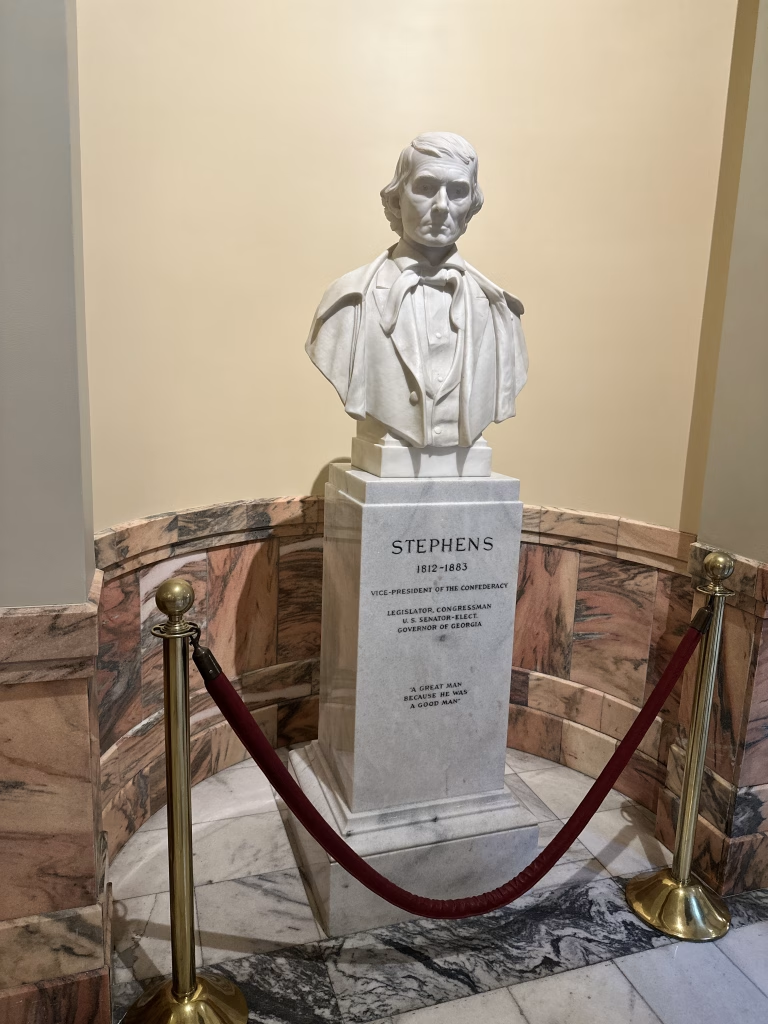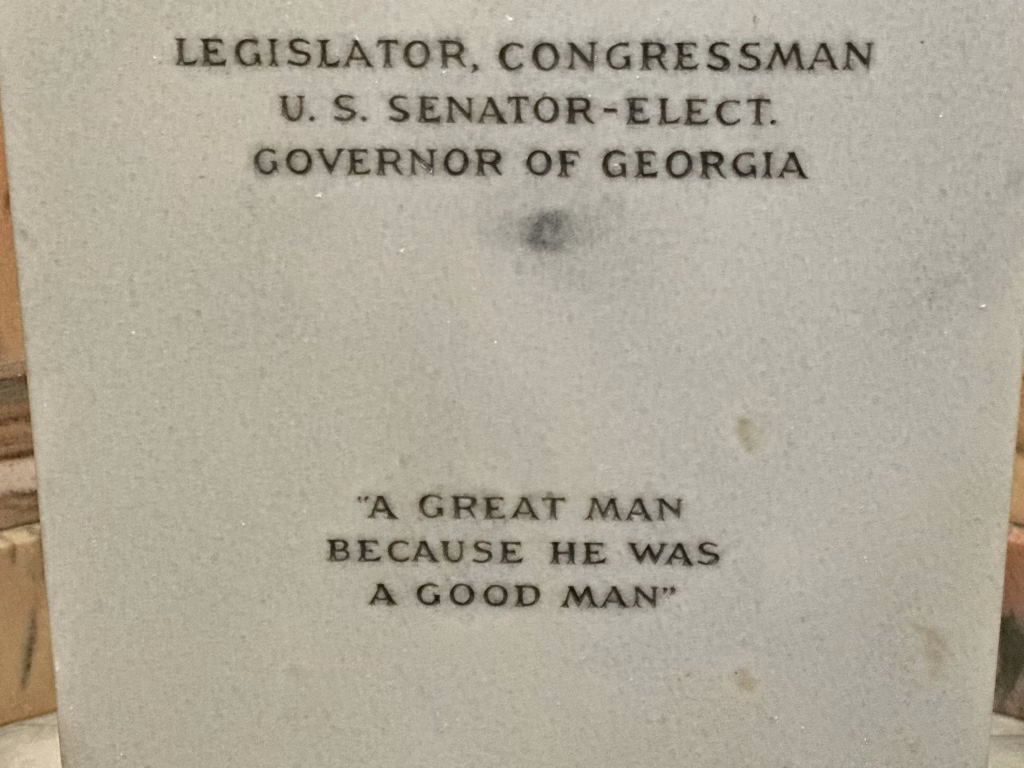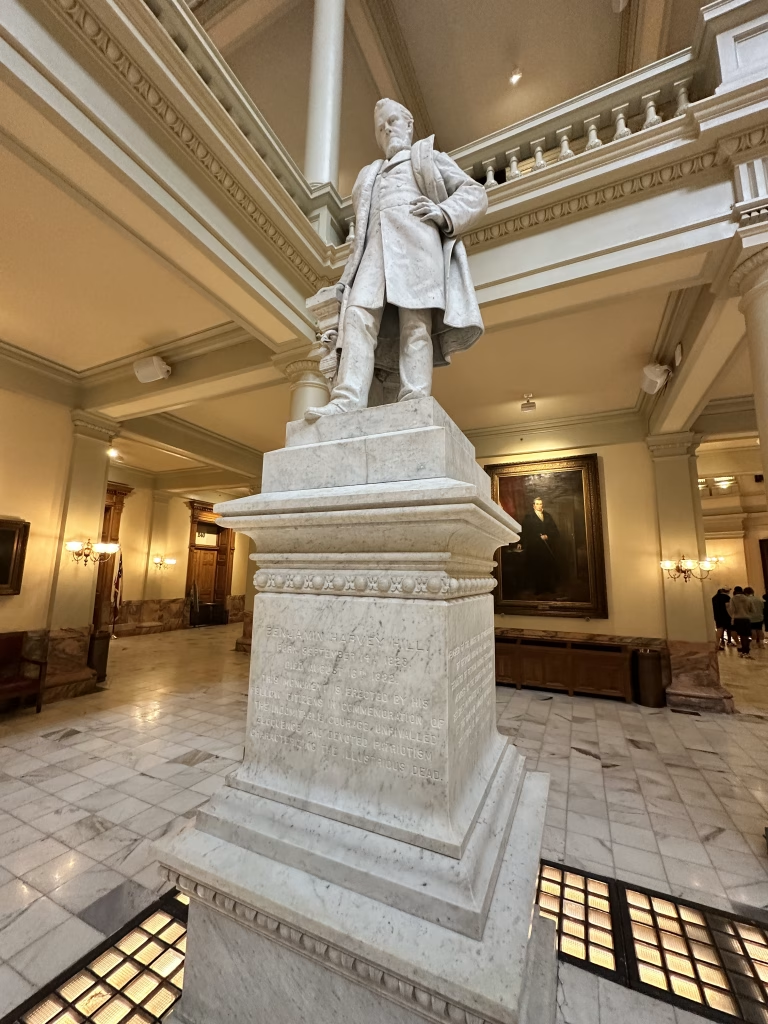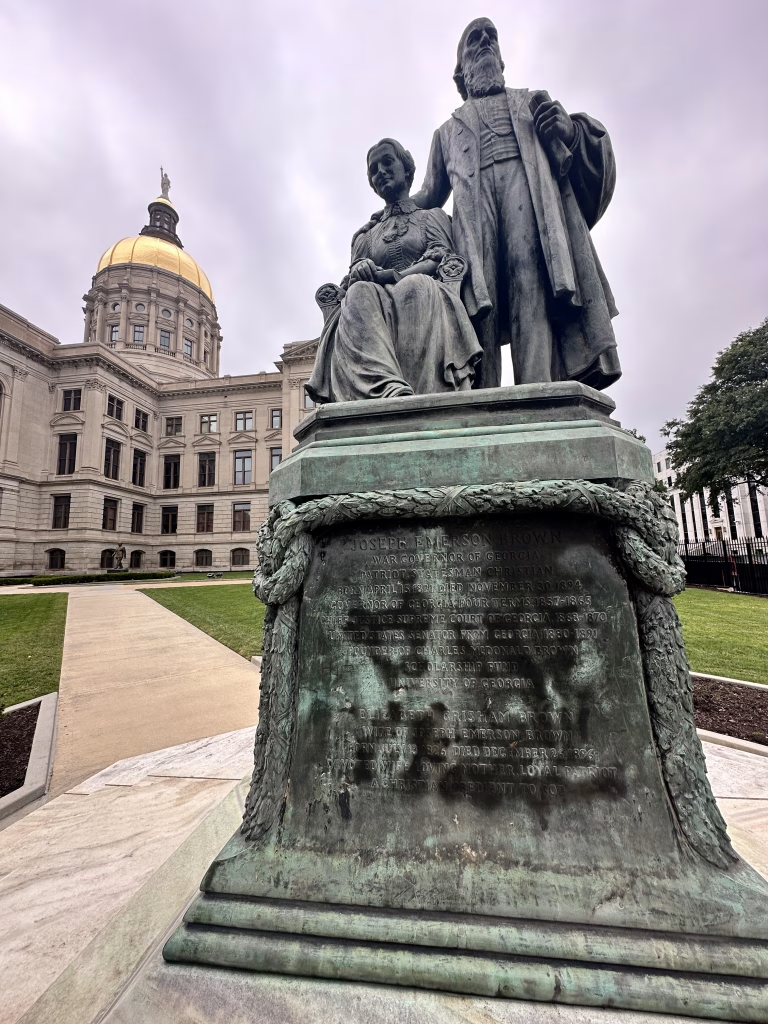Part of why I have not written as much over the last several days is that I was sojourning for a few days in Atlanta. During my visit, I visited the state Capitol. Not surprisingly, there are a lot of pro-Confederate statuary and the like on the grounds and inside the building. A resident of Alabama, for example, should not throw stones, I guess.
Still, some specific things struck me.
First, it was this statue of Alexander Stephens.

Now, just in case readers are unaware, Stephens was not only, as the statue notes, the Vice President of the Confederate States of America, but he was also the author and presenter of what is known as the Cornerstone Speech.
Allow me to quote it.
Our new government is founded upon exactly the opposite idea; its foundations are laid, its corner-stone rests, upon the great truth that the negro is not equal to the white man; that slavery subordination to the superior race is his natural and normal condition.
I would contrast that quotation with this statement engraved in the base of the statue.

If Georgia wishes to have a statue of Stephens in its Capitol, in a place of honor, without posting that speech next to said statue, then it is making a choice to sanitize who he was and what he wanted.
I would contend that a “good man” would not have rebelled against the US for the expressed purpose of maintaining slavery.
It is worth noting that one of Georgia’s two statues in National Statuary Hall in the US Capitol building is also a statue of Stephens.
Now, a clear reason the Stephens would have a statue in the state Capitol is that he was the Governor of Georgia from 1882-1883. Astute students of history would note that that was after the Civil War. Indeed, not only was Stephens governor after the Civil War, but he was also a member of the US House from 1873 to 1882.
And it is this fact that connects to several other statues. For example, this one of Benjamin Harvey Hill. The inscription on the plinth notes he was a US Representative and a US Senator prior to the Civil War, but also a member of the convention that formed the CSA and a member of the CSA legislature.
He was, after the Civil War, a US Representative and a US Senator.
It also says that “He was at all times the champion of human liberty.” I would suggest that phrase is only accurate if one thinks that non-whites are not humans.

Additionally, here’s Jospesh Emerson Brown.

Again: a politician who served the CSA who later served in the US government.
None of this is a new observation, but it remains striking, especially the older that I get, the degree to which our politicians and citizens still wish to revere Confederates.
But, moreover, is that all three of these statues remind me of the utter lack of consequence for the rebellion and the degree to which the CSA elite were allowed to stay elites and faced little long-term consequences for their actions.
It is more than a little stunning that the Vice President of the CSA was allowed to stay in elected politics and to serve again in the US government.
How much better would we have been if there had been a more complete Reconstruction and the actual barring of high-level Confederates from office?
We are not good at consequences in the US, despite our alleged fealty to the notion of the rule of law and justice for all. (See also, Watergate).
Click this link for the original source of this article.
Author: Steven L. Taylor
This content is courtesy of, and owned and copyrighted by, https://www.outsidethebeltway.com and its author. This content is made available by use of the public RSS feed offered by the host site and is used for educational purposes only. If you are the author or represent the host site and would like this content removed now and in the future, please contact USSANews.com using the email address in the Contact page found in the website menu.







